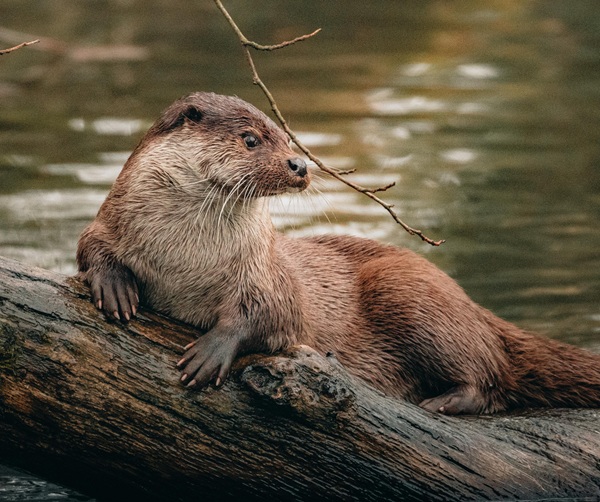
The North American river otter (Lontra canadensis) is a playful, semi-aquatic mammal that has made an impressive comeback in recent decades. Known for its sleek fur, webbed feet, and playful antics, the river otter plays a vital role in freshwater ecosystems. Once facing significant population declines due to habitat destruction and unregulated trapping, conservation efforts have helped restore otter populations across many parts of North America.
Habitat and Range
River otters primarily inhabit freshwater environments such as rivers, lakes, wetlands, and coastal marshes. They prefer clean, slow-moving or still waters with abundant fish populations and healthy vegetation along the banks. Their range extends across Canada, the United States, and parts of Mexico, though they are absent in arid regions like the southwestern U.S. and parts of the Great Plains.
River otters are highly adaptable and can thrive in a variety of water sources as long as they have access to food and suitable den sites. They create dens in burrows along riverbanks, often taking over abandoned beaver lodges or hollow logs. Their dens have underwater entrances that provide protection from predators.
Why the River Otter Has Made a Comeback
At one time, river otter populations declined dramatically due to habitat destruction, pollution, and excessive hunting for their valuable fur. By the early 20th century, they had disappeared from much of their historic range in the United States. However, several key conservation efforts helped facilitate their return:
Pollution Control and Waterway Restoration
The Clean Water Act (1972) and other environmental laws improved water quality, reducing contamination from industrial and agricultural runoff. As fish populations recovered, so did the river otters that depend on them for food.
Reintroduction Programs
Wildlife agencies in several states, including Missouri, Kentucky, and Pennsylvania, successfully reintroduced river otters into areas where they had vanished. These programs used otters from healthy populations to reestablish breeding groups in suitable habitats.
Legal Protections and Trapping Regulations
Laws restricting unregulated trapping and hunting helped stabilize populations. While river otters are still harvested for their fur in some areas, strict regulations ensure sustainable management.
Wetland Conservation Efforts
The restoration and protection of wetlands, often driven by conservation groups and government initiatives, have provided otters with the habitat they need to thrive. Beavers, which also rebounded due to conservation efforts, have played a role in creating wetlands that benefit otters.
The Future of the River Otter
Thanks to these conservation efforts, river otters have returned to many of their former habitats, including regions where they had been absent for over a century. While some populations remain vulnerable due to ongoing habitat loss and water pollution, their overall outlook is positive. Continued environmental protection and habitat restoration will be crucial to ensuring their long-term success.
The comeback of the river otter is a testament to the effectiveness of conservation efforts and the resilience of nature when given a chance to recover. Whether playfully sliding down muddy riverbanks or gracefully swimming through clean waters, river otters continue to serve as an important indicator of healthy aquatic ecosystems across North America.


Comment here